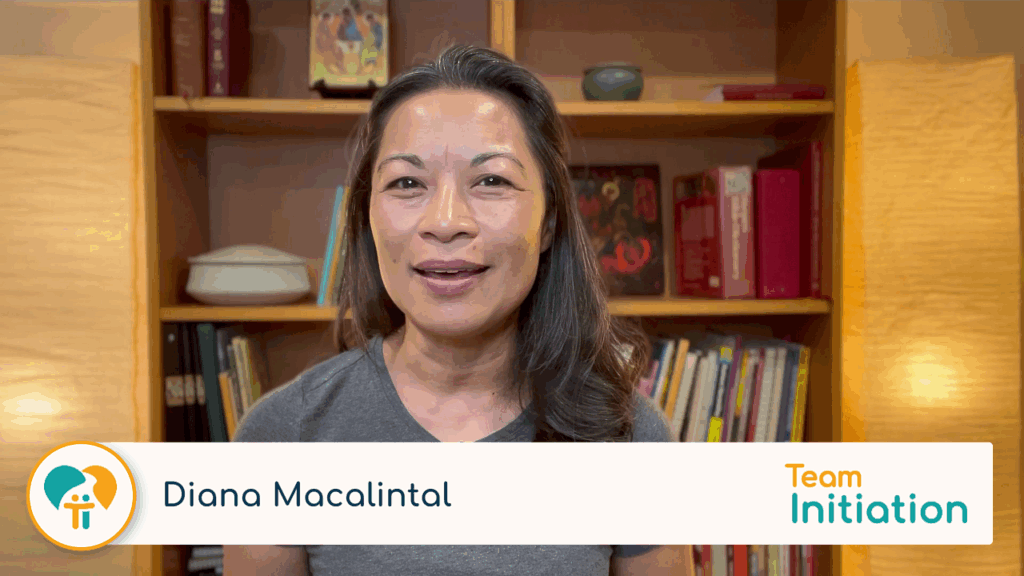When twelve-year-old Connor started nodding off in our children’s RCIA session, I knew it was time for me to stop talking and for everyone else to get up and move. As a catechist in children’s RCIA, I sometimes have to resist the urge to talk too much. No matter how brilliant our RCIA session may be, talking too much can bore our children to tears! Here are four ways keep boredom at bay.
Get up and move
One of my favorite ways, and the kids’ favorite ways, to keep the session moving along is to actually get up and move. I like to call them “field trips.” We go and visit and a different spot in the church or on the parish grounds. Thus, if we are talking about the sacrament of reconciliation, we visit the reconciliation room. Or, if we are talking about the sacred oils (chrism, the oil of the sick and the oil of catechumens), we go and find the oils. Our church has beautiful stained glass windows depicting various saints and scenes in the life of Christ, so sometimes we take a look at those and even stop and say a prayer while we’re there.
I usually invite parents, sponsors and everyone to go along on the field trip. Often parents who might be new to Church or returning to Church are interested in the places we are visiting. But, sometimes, I give parents questions to discuss on their own while the catechumens and their companions are with me.
Small group activity
Whether we have four or forty in our children’s RCIA, I do a small group activity every session for at least 10-15 minutes. In a small group (2-5 people), everyone participates and everyone is involved. There are lots of different ways to arrange your small groups and lots of different activities that can be done in this way. Here are just a few.
- Age groups: younger children in a group and older children in a group. You may need a catechist or parent to facilitate the group depending upon the activity.
- Family groups: each family does an activity or discusses given questions.
- Intergenerational groups: I like to do a Bible search activity with an intergenerational group. The adults or older children can help the younger folks find the given Bible story. Then, the group discusses a set of questions about the passage and reports out to the larger group.
- Pairs: Pair folks together in a variety of ways; parent-child pairs, similar age pairs, younger child with older child, sponsor/godparent with child. I like to do a “walk and talk” activity in pairs. The pair is given a set of questions and “takes a walk” while they are discussing the questions.
Teach them how to pray
Praying is never boring. And, often our young catechumens do not know how to pray. Sometimes prayer has not been a part of their family life, so child catechumens are unfamiliar with the many different types of prayer. The best way to teach prayer is to pray with the children and their families. Of course, that means they don’t just watch you pray, but they are encouraged and shown how to pray.
You might start simply by having everyone say a traditional Catholic prayer together, or read a line in a “scripted” prayer or litany. I encourage you do try a guided meditation, particularly one centered on a Gospel story. As you well know, there are all kinds of ways to pray.
Celebrate the minor rites
Like prayer, ritual is never boring – at least when it’s done well. Close your sessions with one of the minor rites given in the RCIA, nos. 81-105. These simple rites add a sense of importance and reverence to your sessions. Invite your parish priest or deacon to do the anointing with the oil of catechumens. As a catechist for children’s RCIA, you can likely preside at the other minor rites (see RCIA, nos. 91, 96, 16). All it takes is a little extra preparation to add this ritual dimension to your children’s RCIA session. And, believe me; they won’t nod off during one of these minor rites.
Your boredom fighters
What are some of the techniques you use in children’s RCIA to keep from boring your children to tears?


















I’m a big fan of games and use them a lot with my group. We have used memory to learn all the “stuff” you see in church, you only get to keep the matches if you can name them or describe when they are used. I have a series of cards to go with the Bible stories we cover and we see which group can put them in order the fastest. And jeopardy is great for reviewing lot of stuff.
I agree, Karen. Turning learning into a “game” makes it so much more fun! I know my daughters love doing jeopardy type games.
I teach 6th graders. To keep them engaged on a dark Wednesday night I ask them constant questions, and encourage them to tell the stories, identify characters, & draw conclusions.
Like so:
“Hey it’s February. I notice there’s more daylight now when y’all get dropped off, why is that?
The days are getting longer?
Yes, the Sun is up more. It’ll be Spring soon, and the days…lengthen [on the board]. English-speakers once called this time of the year the “lengthen season.” Now watch the Magic Finger (I erase letters in lengthen so it says len-t-en); what does the Church call this season?
Umm…Lent?
Yes, why?
Because the days lengthen!
Yes, so Lent is short for…
..Lenten…
yes, which is short for…
lengthen!
Yes. Y’all are too smart. Sometimes we say Lent, sometimes we say Lenten season. ¿Quién aquí habla Español?
Me!
Honorary son, what’s Spanish for Lent?
Cuaresma [on the board].
How many days is Lent, Cuaresma?
Forty.
How do you know?
Because cuaresma is like the word for forty.
Which is?
Cuarenta [on the board].
Yes; y’all can see how Spanish tells us Lent is 40 days long. Class, what’s up with 40; why not 38 days, or 43 days?
Because Jesus was in the desert for 40 days!
Yes, and the Israelites…
were in the desert for 40 years!
Yes, good. Forty is an important number in the Bible; there are more 40s in the Bible than we have time for. Now, if you’re in the desert like Jesus or the Israelites, are you having fun?
I don’t think so.
Right, being in the desert involves discomfort, suffering.
Christian, what a fun and interactive idea! I love the word game! Plus, it teaches us English-speakers a little Spanish.
Wow! Christian, I love the sample dialogue in your post. I too have a bilingual setting, and I love the way you integrated the Spanish into the lesson instead of just straight translating. As I write this, another part of my brain is buzzing with how to apply your ideas to my class!
Louisa, have a look at this link, I consider my Spanish-speakers an asset:
http://platytera.blogspot.com/2010/03/quien-aqui-habla-espanol.html
Christian,
Thanks for the suggestions on ways we can make Spanish part of the “fabric” of our sessions. And, it’s great to go back to your post from Feb 2012 on
Cuaresma.